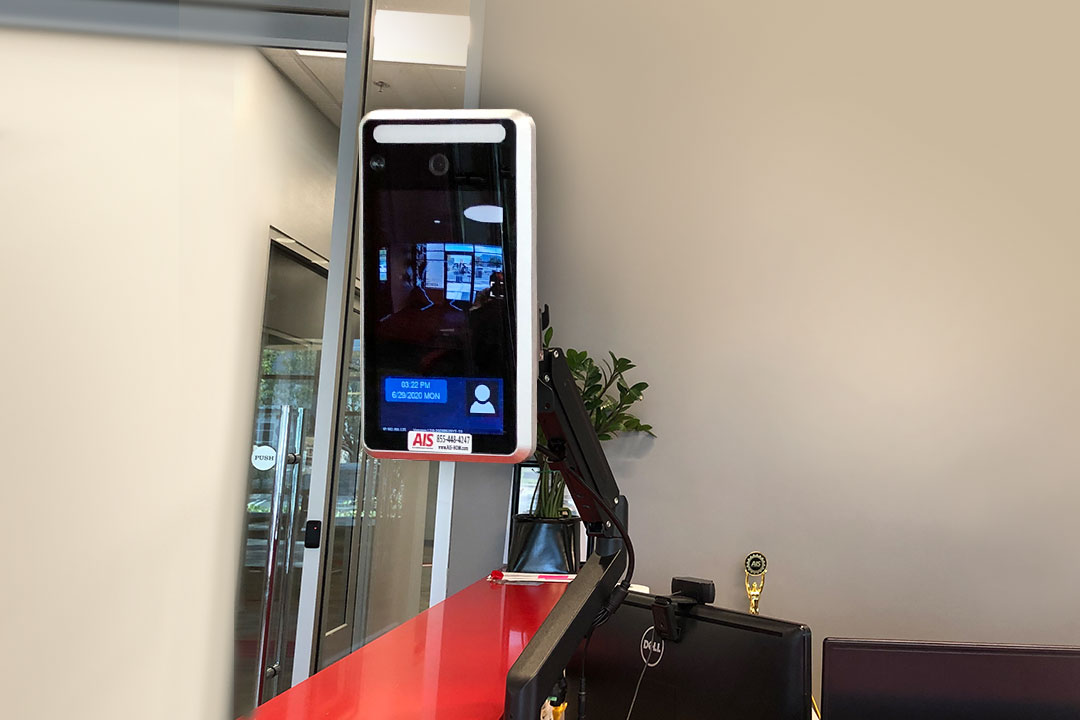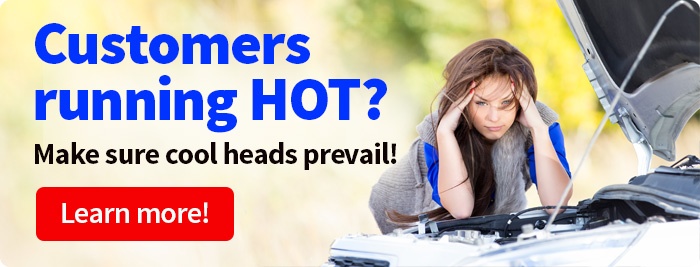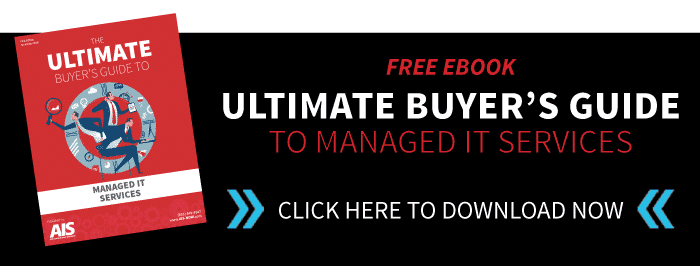Temperature Scanners For Your Business: Essential Hardware and Software
July 1st, 2020 | 5 min. read

The current pandemic we face each day has completely revolutionized the way businesses interact with employees and customers. Whether you are at the airport or a restaurant, you are likely to spot numerous checkpoints for any inbound personnel.
But even with such critical measures, have you stopped to think of what those checkpoints mean for your customers, such as temperature scanners kiosks?
Rather than exposing your customers and staff members to such health risks, it is certainly time to invest in an automatic and touchless temperature screening device for your business.
But first things first, what properties should your temperature scanner kiosk have, especially in terms of hardware and software components?
We’re diving into some of the most valuable and important hardware and software features that you need to be on the lookout for as you search for a temperature scanning device for your office.
Temperature Scanners For Your Business: What To Look For
You’ve got a lot of options to choose from when it comes to a temperature scanning kiosk. It’s important to learn the hardware and software included in these devices, so you make the best purchasing decision for your business.
Like any other technology, each device is different and offers a variety of features and add-ons.
Hardware Features of Your Temperature Scanning Kiosk
1. Video Cameras
When it comes to providing top-of-the-line results for your customers and employees, make sure to note that a temperature scanner is no good without video cameras. A complete temperature screening device needs to capture or recognize the user’s facial image area for accurate testing.
Keep in mind that your temperature scanners need to obtain high-quality videos, as low-quality ones will prove ineffective in their image display.
To get the best use of your captured data, set up recognition terminals for your temperature scanners at your business's entry points, such as the front desk, reception area, or loading docks. Doing so ensures you’ll obtain a non-intrusive temperature checkpoint, setting you apart from other businesses.
2. Infrared Sensors
Another essential component that your temperature scanners need is thermal or infrared sensors. These sensors come in handy in allowing you to get proper and effective temperature checks, with some coming close to accuracy levels of 0.5°F.
Infrared sensors can come as a standalone hardware component or be purchased as integrated devices complete with a smartphone.
Depending on your location or preference, be sure to pick one that will serve your temperature screening needs well.
For example, placing your temperature scanner kiosk in direct sunlight or outdoors will record inaccurate data, so make you follow the manufacturer’s specifications and recommendations for placement to get optimal and accurate readings.
It is noteworthy that the current wave of health concerns regarding radiation exposure may occasionally give rise to concerns regarding infrared use. So, is it safe to use?
Infrared sensors are safe to use for your business and will not expose anyone to harmful radiation. It is one of the most reliable practices currently in use for temperature checks for numerous companies.
So, you can rest assured that your business will not land in any trouble. Using this non-contact feature in your temperature scanners guarantees you’re getting a quick fever detection reading, especially in large premises.
3. Automated Screens
The third hardware component that your temperature scanners should have is an automated screen. With this feature, all incoming personnel can view themselves as they approach the temperature screening points.
Automated screens eliminate an on-the-ground-scanning person or team that would otherwise increase COVID-19 transmission level due to the close contact of human traffic at your entrances.
Speaking of screens, most temperature scanner kiosks are small and compact (about the size of a tablet), making it easy for you to place just about anywhere at your business.
4. Speakers for Audio
The last piece of hardware that your device should come with is speakers. Because let's face it, controlling your business's exposure to COVID-19 requires a proper reporting and feedback tool.
Speakers will serve this purpose well, providing you with appropriate audible alerts. But keep in mind that if you want to benefit from temperature scanner speakers, you first have to set up some guidelines for your alerts.
For instance, you can incorporate automated messages for customers and employees defying personal protective policies such as mask-wearing or a fever that exceeds the limit set on the device.
Your speakers can also alert you if any breach occurs, ensuring you can track such individuals by using your video cameras.
Software Features
1. Facial Recognition Software
Facial recognition is the first software feature that you need to be on the lookout for when purchasing a temperature scanner kiosk. Facial recognition software comes in handy in mapping out the outline image of an approaching individual.
It then makes it possible for your scanners to measure the temperature from any facial point, even where there is movement due to your scanners' adaptive moving range properties.
Additionally, facial recognition software can also capture large datasets of facial surface temperature information from individuals at your temperature checkpoints.
Whether you are hesitant about your morning or evening peak hours, your recognition software will ensure that you operate at your normal productivity levels.
While facial recognition software can be used for temperature checks, it can also work well for security control in restricted employee areas or specific facilities.
Rather than purchasing separate software for different needs, combine these functions to double up as a tool for temperature screening and security control. How convenient is that? Check to see if the temperature scanner you are purchasing integrates with other software like ACS (Access Control System) for these added capabilities.
2. Integrated Software Processor
Capturing data is just one part of the puzzle when it comes to temperature screening. Next comes the integration of information between your hardware and software components.
Your temperature scanners should provide your administrators with feedback to keep you in the know of everything that takes place at your checkpoints. By adopting scanners with integrated software processors, you get the benefit of receiving quick real-time processing of information resulting in fast updates and alerts via email or text where suitable.
3. Storage Features
Lastly, storage is another essential feature that you need to pay close attention to. A temperature screening system with storage capacity is essential to meet your needs, such as security access and health monitoring for your employees and visitors. Only if you plan on capturing this data.
You may occasionally need to monitor your employees' health and better stay informed of any changes. Keep in mind, that you will need to adhere to industry standards, compliance, and all applicable laws concerning the capturing and storage of personal information, images, and data.
The Final Say: Hardware And Software Components of a Temperature Scanner Kiosk
An everyday manual temperature scanner kiosk no longer holds up to industry safety standards. Why not take it a notch higher and get a thermal scanner, to better protect your employees and visitors?
The advantages of temperature scanners are endless, from setting you apart from competing businesses to keeping you in the loop with real-time monitoring.
Unfortunately, protecting your employees, visitors, customers, and guests is no longer a luxury. It is a necessity that your business needs to consider to safeguard all parties against COVID-19 and other contagious viruses.
AIS is an expert at technology solutions guaranteed to provide a seamless flow of business operations. We offer temperature scanning kiosks and screening systems to keep your workforce protected. To learn more about these and other technology solutions, reach out to us here. We’re here to give you peace of mind to help you win more business.
A true southerner from Atlanta, Georgia, Marissa has always had a strong passion for writing and storytelling. She moved out west in 2018 where she became an expert on all things business technology-related as the Content Producer at AIS. Coupled with her knowledge of SEO best practices, she's been integral in catapulting AIS to the digital forefront of the industry. In her free time, she enjoys sipping wine and hanging out with her rescue-dog, WIllow. Basically, she loves wine and dogs, but not whiny dogs.



